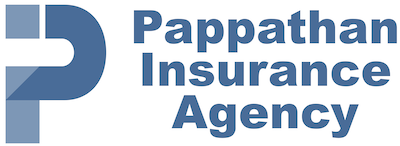Take a moment to think about all the stuff in your home. What comes to mind? Maybe your cherished record collection or a big flat-screen TV you have mounted on the wall.
OK, that’s the big stuff. But what about all the small stuff that fills a home? All of your clothes, shoes and jewelry. Your computer devices and smartphones. Your kitchen appliances, pots and pans. The items stored in closets and drawers.
Imagine a worst-case scenario, like a house fire, that destroys all of those items. Would you be able to name every single item lost?

Why a Home Inventory Is Vital
A good home inventory should have the following information:
- A description of the item, including the make and model (if applicable)
- Estimated value of the item
- Purchase date
- Receipts
- Serial number
You’re obviously not going to have receipts for everything you own. But for general categories, like clothing, you can provide a count. For example, “Six pairs of jeans, 10 dress shirts, two pairs of sneakers.” But make sure to note any valuable items, like an expensive suit or dress.
And don’t forget off-site items, such as belongings you keep at a storage facility. Your homeowners insurance policy may cover items at off-site facilities from problems like theft and fire.
How Do I Make a Home Inventory?
A home inventory can be as simple as a written list, pictures or video. Or use a home inventory app to help you compile your list. As you inventory your personal belongings, don’t forget all of your drawers, closets, attic, basement and if you’re brave, take a look under your bed.
However you decide to create a home inventory, the key is to be as detailed as possible and to store a copy of the inventory outside your home. For example, you can store an electronic copy in a cloud service or keep a hard copy with a relative.
You’ll also want to update your home inventory on a regular basis. It’s a good idea to update it every year. That way you can add any items you’ve acquired or delete items you’ve gotten rid of.
Make a List
A list can be as simple as a pen and paper or a spreadsheet on your laptop. Here are some organizing tips to get you started:
- Organize your list by room. Pick a room and record all of the contents. For example, start in your living room and list everything, like your TV, coffee table, recliner and sofa. Don’t forget the small stuff, like books, knickknacks and decorations on your shelves.
- Organize your list by groups of items. Or, group together items like antiques, artwork, clothes, collections, jewelry, kitchen items, furniture, musical instruments and miscellaneous items.
Take Photos and/or Video
If you have a smartphone, you have the tools you need to record your personal belongings with photos or video. Take a walk through your house and capture each item. If possible, get a clear shot of the serial number. If you’re taking a video, it’s a good idea to describe the item, its estimated value and the date of purchase.
Using a Home Inventory App
You can use an app for your smartphone or tablet to list items, store photos and video. The National Association of Insurance Commissioners recently launched a home inventory app (available in the App Store or through Google Play) that has the ability to:
- Group belongings by category
- Scan barcodes for accuracy
- Upload and export photos
- Find disaster preparation advice
- Review information about filing insurance claims
Other home inventory apps include:
- BluePlum Home Inventory
- Encircle Home Inventory
- Magic Home Inventory
- Memento Database
- Nest Egg
- Sortly
Some apps may not be available on all operating systems and may require in-app purchases.
Re-Evaluate Your Insurance on Valuable Items
While you’re documenting all of your stuff, it’s a good time to take a look at high-value items such as jewelry, musical instruments, artwork and electronics. That’s because homeowners insurance might put a special sub-limit on certain types of items.
For example, a common homeowners insurance policy puts a $1,500 limit on theft coverage for jewelry and watches. If you have valuable items, you can “schedule” them. Scheduled personal property is an add-on to homeowners, condo or renters insurance to insure high-value items for their full value.
Quick Tips for Insuring Your Possessions
- A homeowners insurance policy will have specific coverage limits for “contents,” meaning your possessions. Check your policy’s declarations page to see what your contents limit is. Does it appear to be enough to replace all of your furniture, rugs, curtains, clothes, appliances and other possessions?
- Make sure your policy covers the replacement value of your possessions, not the actual cash value. An actual cash value payment would pay you only for the depreciated value of your items, not new replacements.
- If you live in an area that’s prone to earthquakes or floods, you could consider earthquake insurance or flood insurance. Without them, your home and belongings won’t be covered in these disaster situations.
